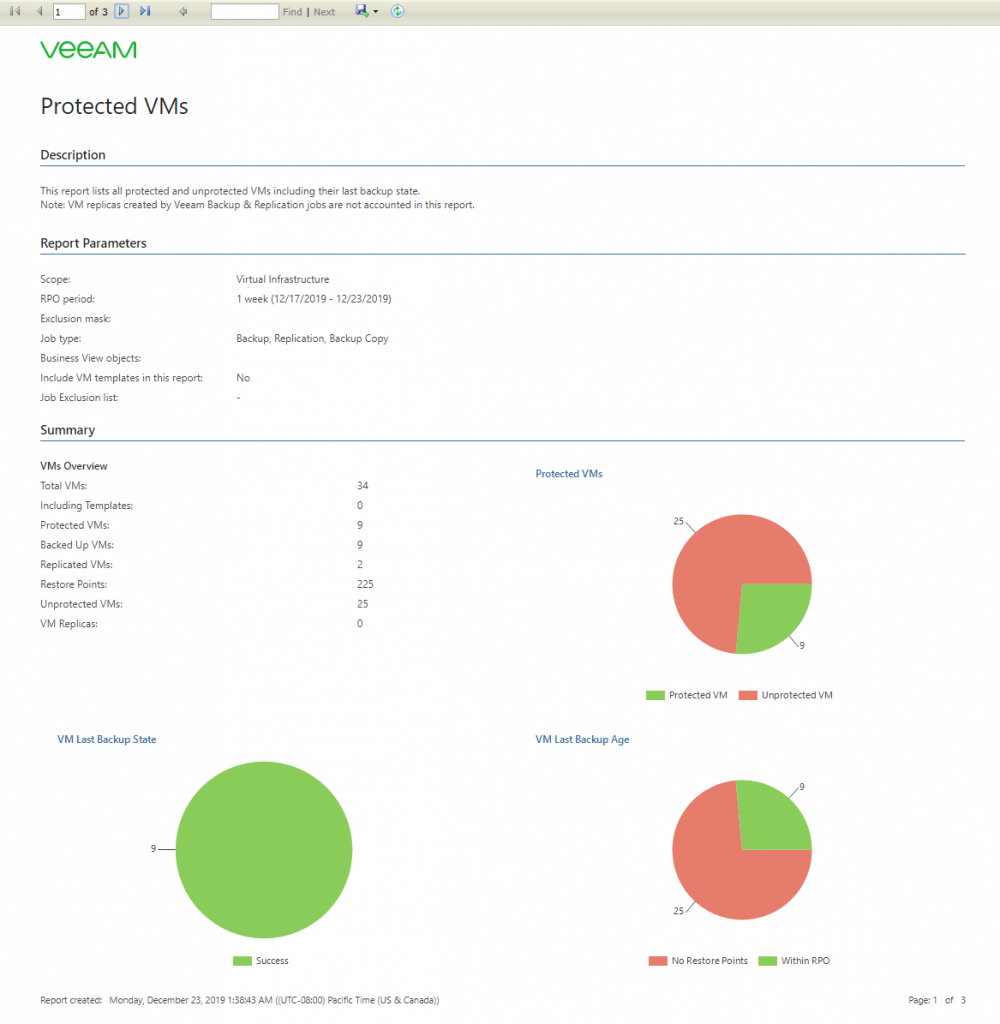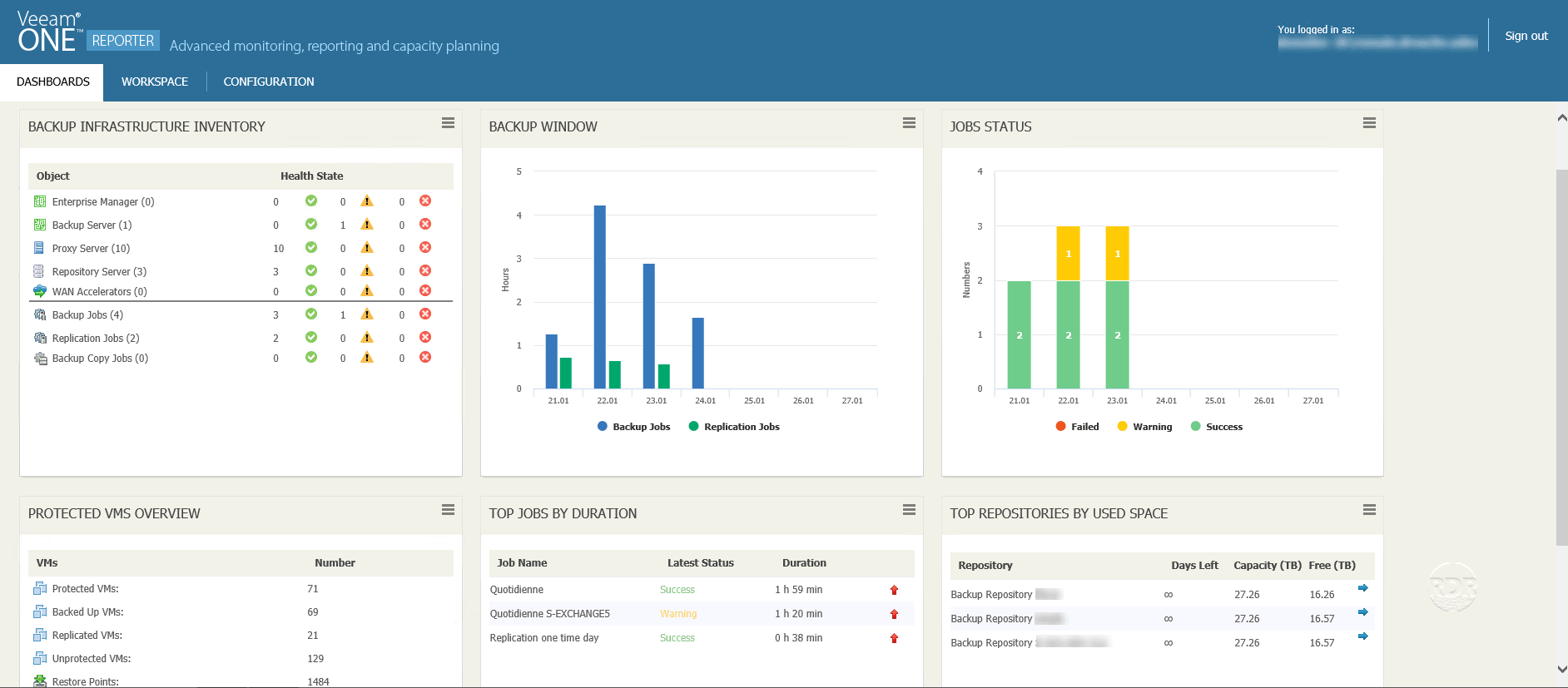

- #VEEAM BACKUP REPORTING HOW TO#
- #VEEAM BACKUP REPORTING INSTALL#
- #VEEAM BACKUP REPORTING ARCHIVE#
- #VEEAM BACKUP REPORTING PLUS#
- #VEEAM BACKUP REPORTING DOWNLOAD#
Html="$reportPath/Azure-Job-Report-$reportDatePath.html" ReportPath="/home/oper/vba_azure_reports"

ReportDateFrom=$(date -d "$reportDateTo - 1 day" '+%Y-%m-%d') VeeamBackupAzureServer=" veeamBackupAzurePort="443" #Default Port
#VEEAM BACKUP REPORTING PLUS#
We will have to edit the configuration parameters, here you can play if you want more than the last 24 hours, email, plus IP of your Veeam Backup for Azure, user/pass, etc.: # Configurations This shell script can be downloaded and run from any Linux, it will need to have access to the Veeam Backup for Azure v2 RESTful API, which is HTTPS.
#VEEAM BACKUP REPORTING DOWNLOAD#
We have almost everything ready, we have one last step, the script that will make all this work, we will download the latest version from the Github repository: Download, and configure the veeam_azure_email_report.sh script. That’s it! Let’s move on to the next thing.
#VEEAM BACKUP REPORTING INSTALL#
I am using an advanced SMTP package called s-nail, so let’s go ahead and install it: apt-get install s-nailĪs we do not want them to go to SPAM, we will use an external mail server to send these emails, to do this, we will edit the local configuration file of the package: vi ~/.mailrcĪnd add the following to the file, which was probably empty, change the server, user and pass with your own: set smtp-use-starttls The second one is related to the ability to send emails. We will need two small system requirements before we continue, first will be JQ, which is a package that helps us parsing the JSON, let’s go and install it, yum install if CentOS: apt-get install jq Small system requirements before we continue This entry is quite new, as I have never done any HTML Report from Bash, it was quite good, and great learning curve, tons of echos on the code, a diagram look like this:Īs we can see, the shell script will download the metrics from Veeam Backup for Azure using the RESTful API, which will then put together into a nice HTML Report, and send it after to the Backup Admin. IF you follow all the steps on this post, you will have something similar to this on your email every day:

Rest assured, after a few hours today, I have taken the truly impressive Veeam Backup for Azure RESTful API, and built the Report for you. This HTML Report is quite important, as, with the Cloud offerings, we tend to protect those workloads with an improved RPO, like doing Snapshots more often, even a few Backups per day, etc. If you have been using Veeam Backup and Replication for quite some time, and you have deployed Veeam Backup for Azure, you might be missing the HTML Daily Report that can help to understand quickly how everything went.
#VEEAM BACKUP REPORTING HOW TO#
#VEEAM BACKUP REPORTING ARCHIVE#


 0 kommentar(er)
0 kommentar(er)
